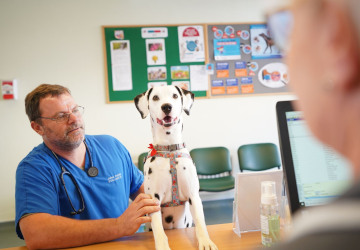
How do I tell if my cat is in pain?
September 14, 2021
Every cat lover should ensure their pet stays in peak condition and the best way to achieve that, in our opinion, is with regular check-ups. If your cat hasn’t seen a vet for a while why not contact us on 01621 828381 and book an appointment.
Make an appointment for a cat check-up
However, regular healthcare will only go so far. From time-to-time cats, like the rest of us, have an accident, feel under the weather or just begin to feel a bit older as common long-term conditions like arthritis set in. It’s because of this that many cat owners ask Jürgen, our head vet, how they can tell if their pet in pain.
How to tell if your cat is in pain
Assuming their day-to-day healthcare needs are being met, here’s a list of the top six behaviours every cat owner should be on the lookout for.
- Vocalisation – If you notice your cat meowing or purring more than normal then you should keep a closer eye on them.
- Reduced appetite – A change in feeding habits is another early sign that something has changed.
- Changes in daily habits – Look out for you cat becoming withdrawn, hiding away and or stopping grooming as well as changes in their toileting habits.
- Altered activities – if your cat is pacing, restless and can’t settle in a comfortable position or wants to play less than normal. See if you can also spot any of the other behaviours on this list.
- Uncharacteristic aggression – Your, usually friendly, cat may growl, hiss or lash out when handled.
- Abnormal posture – A cat in pain may avoid putting weight on sore limbs causing an un-usual stance.
Basically, you’re looking out for any change in daily habits, but you have to look carefully as some cats are good at hiding injury and pain. A hang up from when wild cats needed to show predators how strong they were.
What you should do now
Again, assuming they are checked regularly by a vet, your best option is to get familiar with the way your cat behaves. Then if you spot one of the abnormal behaviours above, keep a closer eye on them. If that behaviour gets worse or if you beginning to identify other behaviours on the list, that’s the point you should be contacting us. Tell us what’s changed and we’ll decide if you should pop in for a check-up.






